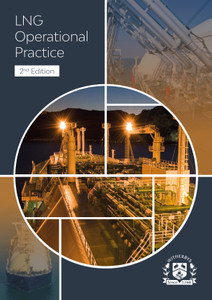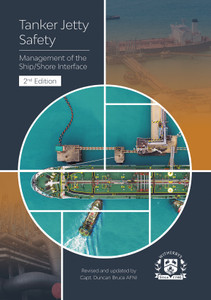
Recommendations for Liquefied Gas Carrier Manifolds
This publication provides recommendations on the layout, strength and fittings for gas carrier manifolds. It is applicable to both LPG and LNG carriers and is an update to the previous edition of ‘Manifold Recommendations for Liquefied Gas Carriers (2011)’.
The aim of this publication is to improve standardisation of LPG and LNG carrier manifolds to assist in the safe connection of cargo transfer equipment at every facility.
Guidance is also provided on cargo spill containment, including deck protection, coaming, drip trays, gratings, drainage and water curtains.
The book categorises carriers by cargo capacity and the recommendations are scaled so they can be applied to carriers of all sizes. Some new gas carrier designs may not be able to conform to all of the recommendations. However, this document is intended to serve as a starting point with a view to minimising differences as much as possible.
Introduction
This document provides recommendations on the layout, strength and fittings for gas carrier manifolds. This version is an update to the previous edition of ‘Manifold Recommendations for Liquefied Gas Carriers (2011)’.
Scope
These recommendations are for liquefied petroleum gas (LPG) carriers and liquefied natural gas (LNG) carriers. For the purposes of this document, the term LPG carrier refers to liquefied gas cargoes carried between the temperature range of 0°C to -104°C.
These recommendations do not apply to existing ships, and there is no suggestion that existing ships should be altered.
It is recognised that some new gas carrier designs may not be able to conform to all of the recommendations in this document, however, this document is intended to serve as a starting point with a view to minimising differences as much as possible.
1. Introduction
1.1 Scope
1.2 Size Categories
2. Manifold Position
2.1 Manifold – LPG
2.2 Manifold – LNG
3. Protection from Cargo Spill
3.1 Deck Protection
3.2 Coaming Requirements
3.3 Drip Trays
3.4 Gratings
3.5 Drainage – LPG
3.6 Drainage – LNG
3.7 Water Curtains for LNG Carriers
4. Manifold Design
4.1 Carbon Steel Manifold
4.2 Stainless Steel Manifold
4.3 Assumptions used for Load Calculations
5. Manifold Specification and Fittings
5.1 Manifold Flanges
5.2 Presentation Flanges
5.3 Marking of Manifolds
5.4 Distance Pieces
5.5 Reducers and Spool Pieces
6. Additional Requirements
6.1 Water and other Connections
6.2 Manifold Area Illumination
6.3 Lifting Equipment and Cargo Hose Support
6.4 LPG Vessels Involved in Floating Hose Transfers
6.5 Access and Exits from the Manifold Area
6.6 Access during Cargo Transfer
7. Bunker Manifolds
7.1 Number and Arrangement
7.2 Size and Location of Bunker Manifold
7.3 Reducers and Spool Pieces for Bunkering
7.4 Strength
7.5 Oil Spill Containment
7.6 LNG Spill Containment and Protection
7.7 Oil Bunker Hose Saddle
7.8 Other Connections
Annexes
Annex 1 – Manifold Strainers
Annex 2 – Glossary of Terms and Abbreviations
Annex 3 – References
SIGTTOThe Society of International Gas Tanker and Terminal Operators (SIGTTO) is an international body established for the exchange of technical information and experience, between members of the industry, to enhance the safety and operational reliability of gas tankers and terminals. Learn more: https://www.sigtto.org/about-us/
OCIMF
The
Oil
Companies
International
Marine
Forum
(OCIMF)
is
a
voluntary
association
of
oil
companies
with
an
interest
in
the
shipment
and
terminalling
of
crude
oil,
oil
products,
petrochemicals
and
gas.
OCIMF
focuses
exclusively
on
preventing
harm
to
people
and
the
environment
by
promoting
best
practice
in
the
design,
construction
and
operation
of
tankers,
barges
and
offshore
vessels
and
their
interfaces
with
terminals.
Learn
more
at
www.ocimf.org
- Number of Pages:
- 51
- ISBN:
- 9781856097697
- Binding Format:
- Hardback
- Book Height:
- 297 mm
- Book Width:
- 210 mm
- Weight:
- 0.7 kg
- Author:
SIGTTO and OCIMF
- Published Date:
- March 2018





